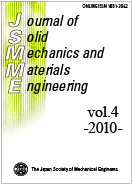Volume 4, Issue 12
Displaying 1-6 of 6 articles from this issue
- |<
- <
- 1
- >
- >|
Papers
-
2010Volume 4Issue 12 Pages 1732-1741
Published: 2010
Released on J-STAGE: December 27, 2010
Download PDF (874K) -
2010Volume 4Issue 12 Pages 1742-1753
Published: 2010
Released on J-STAGE: December 27, 2010
Download PDF (1345K) -
2010Volume 4Issue 12 Pages 1754-1764
Published: 2010
Released on J-STAGE: December 27, 2010
Download PDF (781K) -
2010Volume 4Issue 12 Pages 1765-1777
Published: 2010
Released on J-STAGE: December 27, 2010
Download PDF (851K) -
2010Volume 4Issue 12 Pages 1778-1790
Published: 2010
Released on J-STAGE: December 27, 2010
Download PDF (1027K) -
2010Volume 4Issue 12 Pages 1791-1805
Published: 2010
Released on J-STAGE: December 27, 2010
Download PDF (880K)
- |<
- <
- 1
- >
- >|
